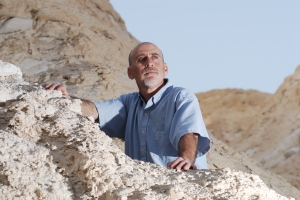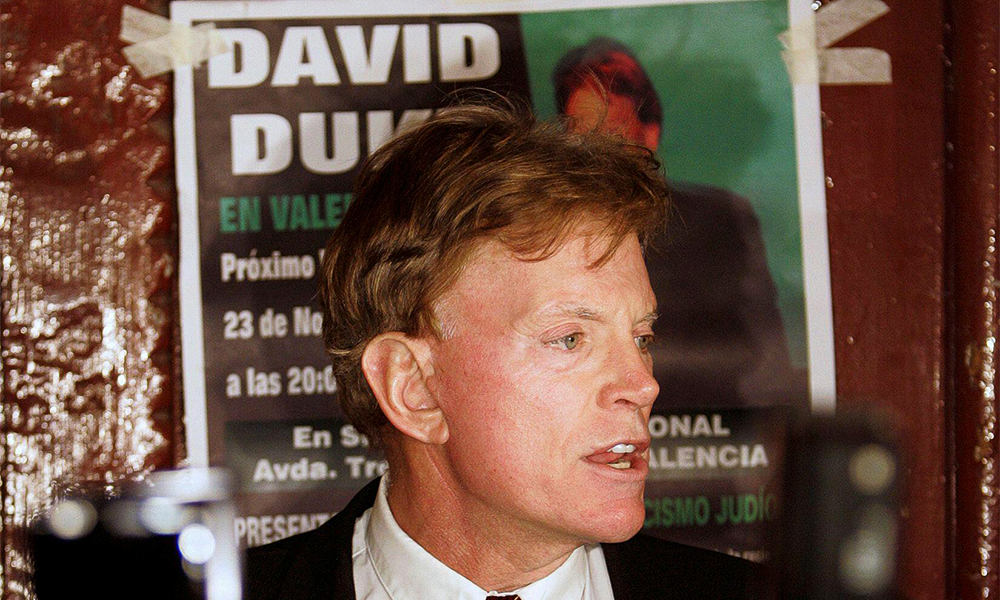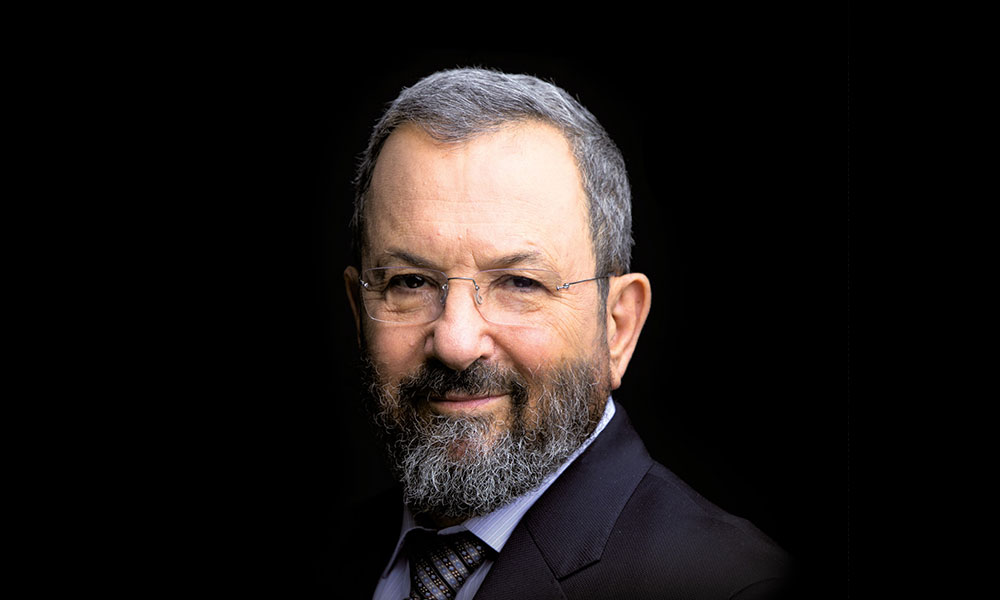I confess to making a dumb and painful mistake in Israel last month: trying to harvest a sabra fruit with my bare hand. I somehow failed to notice the tiny, hairlike darts that cover the entire fruit, one of which lingers in my right ring finger.
Conservationist and Ben-Gurion University Professor Alon Tal, who just received an award from the Israeli government for his environmental teaching and activism, is not a sabra; he grew up in North Carolina before emigrating to Israel at 20. But Tal is prickly, all right, bristling with sharp opinions, including hardcore attitudes about Zionism and “The Land” that rile some of his environmental colleagues on the left. He’s also one of the smartest people I’ve spoken with in Israel, which is saying something. And he talks really, really fast, which is why my notes from our interview were useless. Fortunately, I had a voice recorder, so I can share with you his explanations of why some conservationists make bad Zionists; how desert demographics could bury the Jewish state; and the possibility that Israel’s Bedouins might once have become Jews.![]()
 The “Lifetime Achievement Award” from Israel’s Ministry for Environmental Protection recognized Tal’s work in the field of water management and policy and his emphasis on cross-border cooperation. With a professor from Bir Zeit University, he recently drafted a model agreement on Israeli-Palestinian environmental issues like hazardous materials, air quality, nature preservation and solid waste. (It’s under review by government bodies on both sides, but one wonders if they won’t be distracted by broader political matters.)
The “Lifetime Achievement Award” from Israel’s Ministry for Environmental Protection recognized Tal’s work in the field of water management and policy and his emphasis on cross-border cooperation. With a professor from Bir Zeit University, he recently drafted a model agreement on Israeli-Palestinian environmental issues like hazardous materials, air quality, nature preservation and solid waste. (It’s under review by government bodies on both sides, but one wonders if they won’t be distracted by broader political matters.)
With so much of his achievement founded on similar collaborations, Tal’s unvarnished Zionism can seem an odd graft with his cross-cultural efforts. But it’s worth hearing him out to understand how, to him, his ideas spring from the same seed.
In May 2007, Tal opened a conversation with me and three other U.S. journalists by obligingly describing himself for our readers:
“You can say that Alon Tal is a passionate environmentalist and a passionate Zionist who tries to take these two identities—which sometimes might seem to conflict—and find a way to integrate them together. I have a law degree from Hebrew University. I got a PhD at Harvard in environmental science. Most of my career, I have not been in academia—I was in advocacy. I started what is one of Israel’s most effective environmental groups, the Israel Union for Environmental Defense, in the ’90s, and I set up the Arava Institute for Environmental Studies” where (as its website explains) students of “diverse cultural, historical, ethnic and religious backgrounds” cooperatively study environmental problems and solutions.
Tal also chairs the Jewish National Fund’s international committee on forestry, reservoirs and rivers. When asked, he described his religious affiliation as “Conserve-odox.”
Tal offered a vision of Zionism as a reasonably accommodating yet staunch movement to restore a native people to their land—ideally, but not necessarily, in cooperation with their Palestinian neighbors. “The Zionist perspective was primarily about returning to the Jewish people their status as an indigenous people, and bringing them back to Israel and creating a Jewish state with Jewish sovereignty,” Tal said. The best kind of Zionism, he said, recognizes that connection to the land. “There are a lot of Zionist axioms which have been integrated into environmental thinking,” Tal said. “I just published an article in Environmental History about how Israeli environmentalism is different from that of the rest of the world because of our technological optimism, and I trace it all the way back to Herzl.”
But that optimism met Arab opposition in Palestine. “Every step of the way they were faced with a recalcitrant, intransigent, hostile, violent approach by a people that basically could not imagine a Jewish presence in their land,” Tal said of the early Zionists. “What we’re seeing today is the ramification of that.
“In the Bedouin context,” he added, “it didn’t have to be this way. The story that I heard was that, when David Ben-Gurion established the state in ’49, he quietly approached the Israeli chief rabbinate and said, ‘Listen. There’s only 12,500 Bedouins in the south. I’ve talked to their chiefs. These people don’t really have a Muslim identity. They’ve been in the desert for years: They don’t have a clergy; they don’t have a mosque. ‘They are willing to convert en masse to Judaism and become part of our state.’
“It may be apocryphal,” Tal conceded. Still, he added, he heard it “from a fairly senior source. The rabbinate was appalled at the suggestion, I presume for racist or other considerations.”‘
Tal concluded the anecdote with a riff of wishful thinking: “I wonder what a different world we would live in today if we had embraced the Bedouins in that kind of way and worked with them.” Instead, the Bedouin threat that persists today is an ecological one: the looming demographic disaster of population growth. And its most obvious physical stress point, he said, is the question of access to the “open” land that Bedouin clans believed they owned since Ottoman times but which Israeli authorities have declared off limits.
The Bedouin claim the right to continue wandering freely with their flocks across the central Negev in the way of their ancestors (and ours), while the government seeks to settle them in towns. On its surface, the scenario looks to an American like our country’s misadventures in forcing Indians onto reservations. In this version, it’s nothing more than a greedy land grab by repressive government bureaucrats that deprives indigenous tribes of their patrimony.
Tal grants that Israel has made mistakes in its interactions with the Bedouin. But he insists their nomadic ways can’t work in modern times, for the simple fact that modern humans and their flocks reproduce too successfully. Allowing unchecked grazing rights and freelance construction of “unrecognized” Bedouin towns (Tal counts some 50,000 “illegal” buildings in Bedouin areas) will lead inexorably to desertification, he predicted.
“There’s a carrying capacity issue,” he said. “We live in a small country… When Bedouins had two, three children, and their flocks didn’t have the benefits of modern veterinary medicine, they wandered around and didn’t look at borders and they moved hither and thither.” Now, though, their collective herd can easily exceed 100,000 head of cattle, which Tal says is the maximum that Israeli rangelands can support.
Still, Tal proudly notes, some 60,000 of those, almost all Bedouin-owned, are permitted to graze in Jewish National Fund forests as part of a special sustainability and fire retardation program. (In 2006, Tal received the $100,000 Bronfman Prize for his sustainability efforts on behalf of the JNF.)
“If you wish to have a pastoral life,” he says, “either you respect the carrying capacity of the land and work with the grazing authorities, or have a feedlot center: Buy wheat and other things, like most Jewish farms do, and don’t have a nomadic grazing life.”
So are Tal’s land-use views anti-Arab? Not any more so, he contended, than those of anyone, including several Arab governments, concerned with the future of desert-based societies. “Go to Jordan,” he said. “Go to Mongolia. Go to Morocco, where they’re banning gi-normous areas. It has zero to do with racism—it has to do with ecology.”
Far from racist, Tal added (in an almost breathless torrent), he is a bridge builder. “As somebody who has been in the forefront of the environmental movement’s attempts to reach out to Arabs and have coexistence, and has many, many Arab friends and spends a lot of time thinking about these issues and brought Jordanian students to BGU, I think the presumption should be that I’m not a racist, but that the things I say, I say as someone who is concerned about Jewish sovereignty in the land of Israel,” he said.
“Because we all have to be.”
Alon Tal portrait by Dani Machlis.
—Mandy Katz













